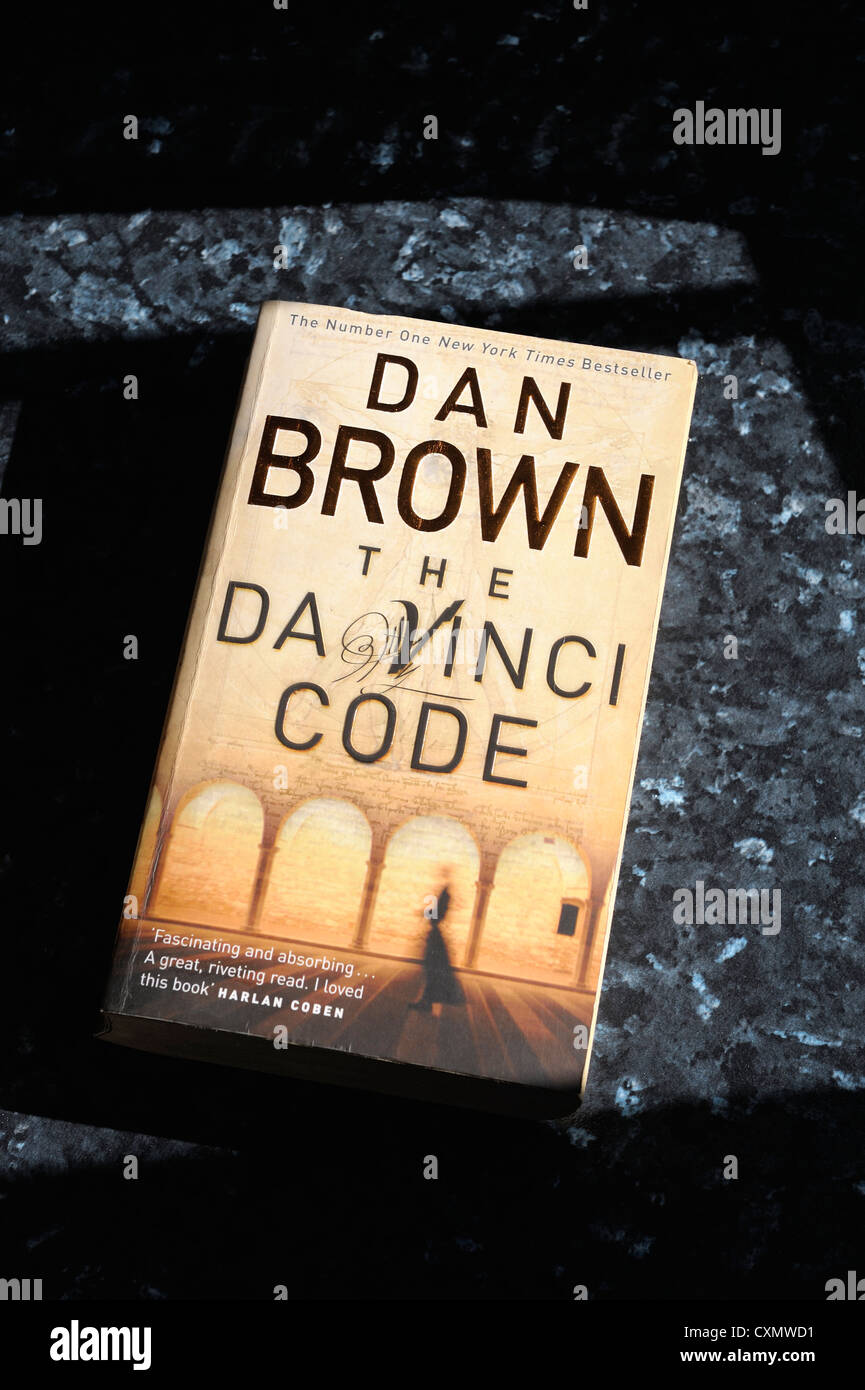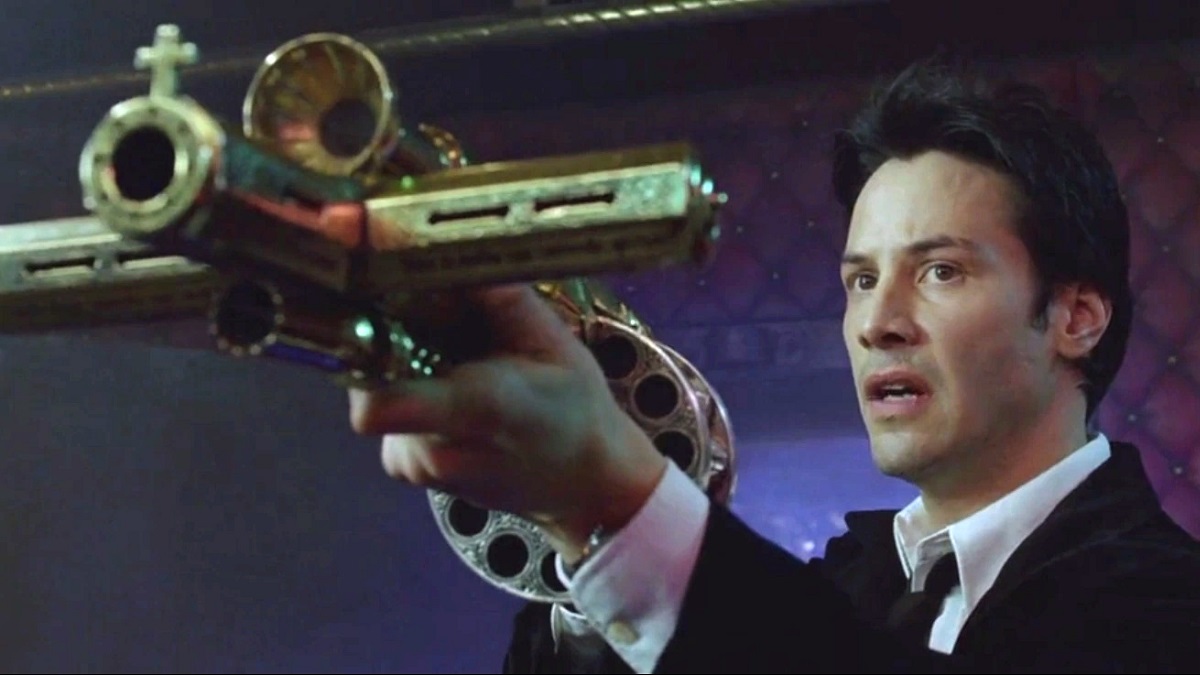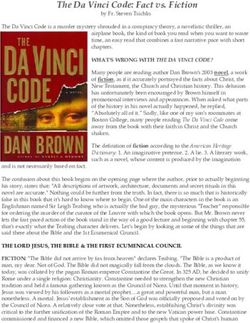The Da Vinci Code: A Critical Analysis Of Dan Brown's Novel

Table of Contents
The Novel's Historical and Religious Claims
The Da Vinci Code masterfully blends fact and fiction, weaving a narrative that draws heavily on historical events and religious interpretations, often controversially. This blend ignited heated discussions among historians, theologians, and the general public.
Fact vs. Fiction
The novel presents a highly speculative interpretation of history and religious texts. While incorporating real historical figures like Mary Magdalene and Leonardo da Vinci, it significantly alters their roles and relationships, creating a narrative that diverges sharply from established historical accounts.
- Historical inaccuracies: The novel's depiction of the Priory of Sion and its alleged connection to the historical Jesus is largely unsubstantiated. The Priory's actual history is far less dramatic than portrayed.
- Reinterpretations of religious texts: The Da Vinci Code offers a radically different interpretation of biblical texts, suggesting a suppressed history of Jesus' marriage to Mary Magdalene and the existence of a bloodline descended from them. This contrasts sharply with traditional Catholic dogma.
- Creative license: Dan Brown takes considerable creative license, manipulating historical evidence and employing conjecture to build his narrative. This blending of fact and fiction forms the core of the book's controversial nature.
The Catholic Church, among others, strongly criticized the novel for its inaccuracies and misrepresentations of religious beliefs. Historians similarly pointed out significant flaws in the book's historical claims. The resulting debate highlighted the crucial distinction between historical fact and fictional interpretation.
The Priory of Sion and its Symbolism
The Priory of Sion, a real historical organization, plays a pivotal role in The Da Vinci Code. The novel elevates it to a powerful secret society entrusted with guarding the truth about Jesus and Mary Magdalene, a claim not supported by historical evidence.
- The Priory's history (real and fictional): The historical Priory of Sion is far less significant than its depiction in the novel. Its connection to the "secrets" of Jesus and Mary Magdalene is purely fictional.
- Symbolism in the novel: The Priory serves as a symbol of hidden knowledge, a secret society preserving truth against powerful forces. This symbolism contributes to the novel's overall narrative of suppressed history and hidden agendas.
- Conspiracy theories and reception: The novel's portrayal of the Priory fuels existing conspiracy theories surrounding the suppression of information about Jesus's life and lineage. This aspect contributed significantly to the book's widespread appeal and its controversial reception.
Character Development and Narrative Structure
The success of The Da Vinci Code is partly attributable to its engaging characters and captivating narrative structure.
Robert Langdon as the Protagonist
Robert Langdon, a Harvard symbologist, serves as the novel's protagonist. His expertise in religious iconography and symbolism drives the narrative forward.
- Strengths and weaknesses: Langdon is portrayed as intelligent, resourceful, and morally upright. However, some critics point to his somewhat simplistic characterization and lack of significant internal conflict.
- Relationships with other characters: His relationship with Sophie Neveu is a crucial element of the plot, driving both the narrative and emotional investment.
- Character development: While Langdon faces challenges and danger, his core personality remains relatively static throughout the novel.
The Pacing and Plot Twists
The Da Vinci Code employs a fast-paced narrative punctuated by frequent plot twists.
- Successful plot devices: The constant unveiling of clues, coupled with the pursuit by antagonists, maintains suspense throughout.
- Narrative arc: The story's arc follows a typical mystery structure, building suspense, revealing clues, and culminating in a final confrontation.
- Impact on the reader: The fast-paced narrative and frequent plot twists hold the reader's attention, keeping them engaged until the very end.
Themes and Interpretations
The Da Vinci Code explores various themes, leading to diverse interpretations.
Religious and Spiritual Themes
The novel prompts reflection on faith, spirituality, and the conflict between established dogma and personal belief.
- Key themes: Faith versus reason, the search for truth, and the power of belief are central to the narrative.
- Religious symbolism: The novel utilizes religious symbolism, often reinterpreting it to support its narrative.
- The novel's message: Ultimately, the book encourages questioning established norms and exploring alternative interpretations of religious history.
Feminist Interpretations and the Role of Women
A significant aspect of the novel's feminist interpretations centers on the role of Mary Magdalene.
- Analysis of female characters: Sophie Neveu is a strong female character who actively participates in uncovering the truth.
- Power dynamics: The novel challenges traditional patriarchal interpretations of religious history, emphasizing the potential role of women in early Christianity.
- Implications about gender roles: The depiction of Mary Magdalene as a powerful figure challenges the traditional view of her as a penitent sinner.
Critical Reception and Legacy
The Da Vinci Code achieved phenomenal commercial success and had a significant cultural impact.
Commercial Success and Cultural Impact
The novel's impact goes beyond mere book sales.
- Sales figures: The book became a global bestseller, selling millions of copies worldwide.
- Film adaptation: The successful film adaptation further solidified the novel's place in popular culture.
- Influence on popular culture: The Da Vinci Code spurred significant discussion about religion, history, and the interpretation of religious texts, entering the wider cultural discourse.
Criticisms and Controversies
Despite its immense popularity, the novel faced considerable criticism.
- Historical inaccuracies: As previously discussed, the historical inaccuracies generated significant controversy.
- Simplistic characterizations: Some critics found the characters to be one-dimensional.
- Sensationalist approach: The novel's sensationalist approach to presenting historical and religious information has drawn criticism.
Conclusion
The Da Vinci Code, despite its historical inaccuracies and controversial interpretations, remains a significant cultural phenomenon. Its compelling narrative, intriguing characters, and thought-provoking themes continue to spark debate and discussion. The novel’s enduring appeal lies in its ability to engage readers with a captivating mystery while prompting them to question established historical and religious narratives. We encourage you to share your interpretations and opinions on The Da Vinci Code – perhaps by joining online forums dedicated to discussing Dan Brown's work or exploring further research on the historical and religious themes it presents. Delve deeper into the world of The Da Vinci Code and explore its enduring impact on popular culture and the ongoing conversations it inspires. Consider exploring other works by Dan Brown or researching the historical and religious figures featured in the novel for a richer understanding of its complexities and controversies.

Featured Posts
-
 Heist Film Sequel Starring Scottish Icon Now Streaming On Amazon Prime
May 13, 2025
Heist Film Sequel Starring Scottish Icon Now Streaming On Amazon Prime
May 13, 2025 -
 Miami Hosts Eva Longorias Lavish 50th Birthday Celebration
May 13, 2025
Miami Hosts Eva Longorias Lavish 50th Birthday Celebration
May 13, 2025 -
 Untangling The Message What Tory Lanez Is Communicating Through His Album Peterson
May 13, 2025
Untangling The Message What Tory Lanez Is Communicating Through His Album Peterson
May 13, 2025 -
 Allemagne Investir Dans La Protection Civile Pour Faire Face Aux Menaces Futures
May 13, 2025
Allemagne Investir Dans La Protection Civile Pour Faire Face Aux Menaces Futures
May 13, 2025 -
 The Da Vinci Code Fact Vs Fiction In Dan Browns Thriller
May 13, 2025
The Da Vinci Code Fact Vs Fiction In Dan Browns Thriller
May 13, 2025
